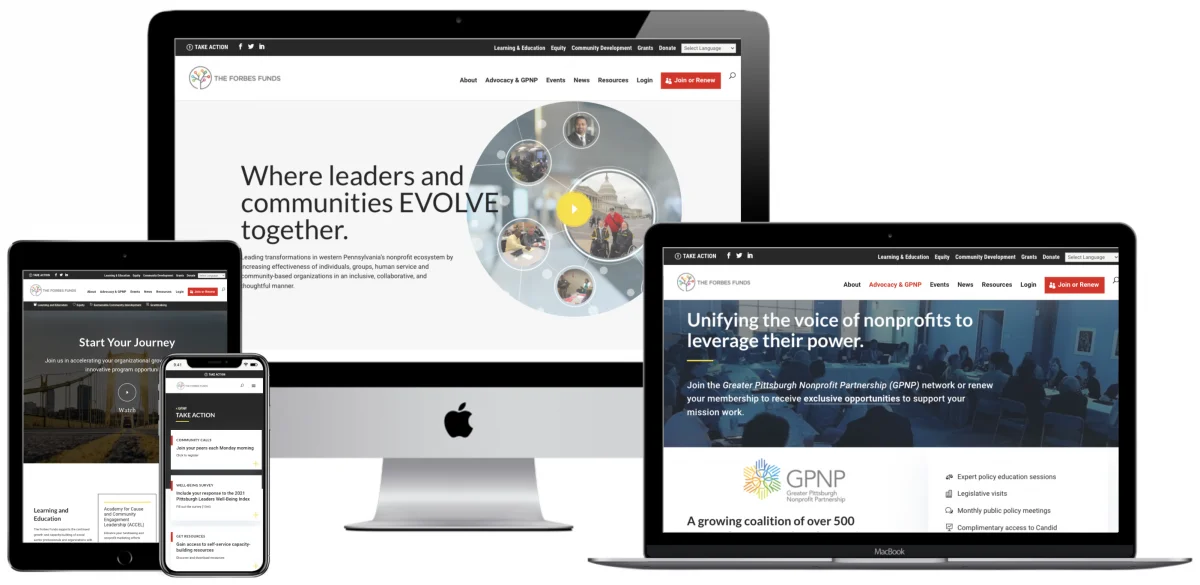When you attend marketing conferences, you may leave feeling pumped and inspired, but how does that translate to your business when you get back to the office? Were you left with four concrete steps to improve your conversion rate or a new way to determine if your blog is generating a positive ROI? It’s understandable that the marketing landscape is a little uncertain with wars raging, AI-first, Google search journeys, voice search, GDPR & CCPA, websites still not being optimized for mobile, and so much more. Where do you even begin to figure out how to rank on Google, keep your rankings, keep your market share, get on the ladder, or whatever your goal is for next year? Let’s explore some concrete 2023 marketing priorities.
Find out what data you collect and how to communicate why to your customers
In an age of “fake news”, Twitter being taken over by Elon Musk, and Facebook leaks by data companies, people are wary of their data being out on the web—or in business databases. I mean some people are still afraid of paying contactless and having online banking! To keep your customers reassured (and to comply with European GDPR laws if you’re an international company), figure out what data you collect on customers and potential customers, how long you need to keep the data, and why. Then you need to communicate the “why” and “how long” to your customers. For example, you may have a landing page where you collect customer name and email address (you’ll want to have some sort of series checkboxes that are unticked that say something like “I would like to subscribe to your blog.” “I agree to receive emails about nearby events from Key Medium.” “I have read the terms and conditions and privacy and cookies notice.” and so forth). Your terms and conditions should set out that you only keep and collect data when the person has submitted their data and that you purge your database, say, every two years (GDPR states that data can be kept “no longer than necessary” for your required business functions). Part of GDPR law is that customers should be able to withdraw consent as easily as they give it.
Incorporate AI into your marketing strategy
AI is the future (whether or not this functionality will take our jobs is another matter). We originally wrote the article you are reading in 2019 and updated it to continue delivering value. Perhaps you may have heard of, and are using—ChatGPT—which has taken the world by storm!
To stay ahead in marketing, you’ll need to embrace AI. You can start by taking a relatively easy function like A/B testing subject lines in email marketing and outsource it to an algorithm. AI excels at tasks humans find tedious and boring but AI can do it in seconds and generate helpful and useful data so you can give your humans more exciting tasks. Ideally, AI will be taking the boring bits out of work and leaving the creative, fulfilling work behind in which humans can excel. Write a list of simple tasks your marketers hate doing, but are vital to the business and figure out if you can outsource these tasks to AI. You’ll find you have a more inspired team if you can since your team will get to do the tasks they love doing, leaving the tedious ones behind. It’s great for growth and development too because you may find your team now has more time to do all of those “nice to haves” on the list you’ve been waiting for years to explore.
Up your customer-service game
Speaking of AI, so many people use chatbots for their customer service. They were told that it was the future, but chatbots mostly test well, but they aren’t always the same as real interaction. Great customer service will give your business competitor advantage, according to Hootsuite’s Penny Wilson. Customers expect most of social and customer service interactions to happen on social media now so make sure your customer service people are live and active on social media and responding to comments on posts, videos, ads, DMs, and everything else. Train your customer service reps to represent and understand your brand, allowing them to tell your brand story, but also give them the freedom to act on behalf of the company and express themselves as individuals for your company, which requires trust.
Crank down the content
Say what? Okay, so many channels say churn out the content. Keep it coming. Make a content train. Post every day. Engage every day. Meme every day. If your audience is engaged with your content, that’s amazing; you’re doing a great job. But, if you’re delivering more content than they can possibly read or keep up with that’s pointless. You’re spending money in the wrong place. That’s where content strategy and content tactics come in. Spend more time creating engaging, well-written, purposeful content that aligns with what your audience wants and your business strategy and goals instead of just being a content factory.
Going deeper into 2023, it may be time to analyze the content you have and figure out which content was most engaging for your audience. Why did that content work so well? Did it have a good conversion rate? Figure out how to replicate the results you want. Are there any gaps in your content that need filling? How is it best to tackle those gaps (probably not 15 pieces on that topic)? Everything you do content-wise in 2023 should be done with precision and purpose.
Be prepared for voice search
This tip is certainly not new but with so many households having voice-search devices (think Alexa, Google Home, Siri, and so on), optimizing voice search is important and it’s not going away. 20% of all Google queries are now done via voice. If you’re one of the first to optimize for these answers, you may be chosen! How do you do this? Make your content readable and conversational.
Be informed about zero-click results
Zero-click results are the results that Google provides automatically where users do not have to click into anything to find the answer. If you ask, “What’s the temperature in Philadelphia” you’ll get an automated zero-click result, often referred to as Featured Snippets and Knowledge panels which are all are rich results (enable rich results with structured data- explore Google’s search gallery of the different types here). So. These zero-click, rich results are programmatically pulled by Google to provide relevant answers to a user’s intent during their search journey but now, since you have to scroll to see any page 1, organic SERP results and even Google Ads results the click-throughs on lower organic results are reduced. Google auto-populates even broader questions too such as “How do I create a marketing funnel?” “What is content strategy?” “What is cryptocurrency?” and so on, which may prevent searchers from looking deeper. Why does this matter? Because 61.8% of Google’s search results are now zero-click. That means organic keywords and keyword strategy doesn’t pay sometimes if you require a user to click through to your content or landing page!
That doesn’t mean abandon ship, though. But you have to be aware and work harder on your content and strategy. Often, the automatic snippet will come from content on page 1, so you need to figure out how to work towards making it easy that Google chooses your answer as the most relevant result. But, more importantly, you need to ensure you take up as much space on page 1 as possible. How do you do that? Use click metrics when deciding which target keywords you’ll use and by simply providing the highest quality content possible so that you help the searcher on their path to an answer, which may lead to expanding your customer base depending upon intent. Figuring out an On-SERP strategy and optimize content to win featured snippets (figure out what the competition is doing to get there) and ensure you are using properly structured data markup to enable rich results in Google.
The takeaways
We will have more ideas on how to improve your marketing upcoming but the landscape is changing. Some strategies have businesses going back to old-school ways (i.e. in-person, live customer service focus), trying new things (AI for menial tasks, voice search, and beating zero-clicks), and ensuring that all data is secure and compliant (giving users peace of mind). What are some ways you’re going to improve your marketing strategy for 2023? What are your 2023 priorities?

Elaine Frieman holds a Master’s Degree and is a UK-based professional editor, educational writer, and former marketing agency content writer where she wrote articles for disparate clients using SEO best practice. She enjoys reading, writing, walking in the countryside, traveling, spending time with other people’s cats, and going for afternoon tea.

